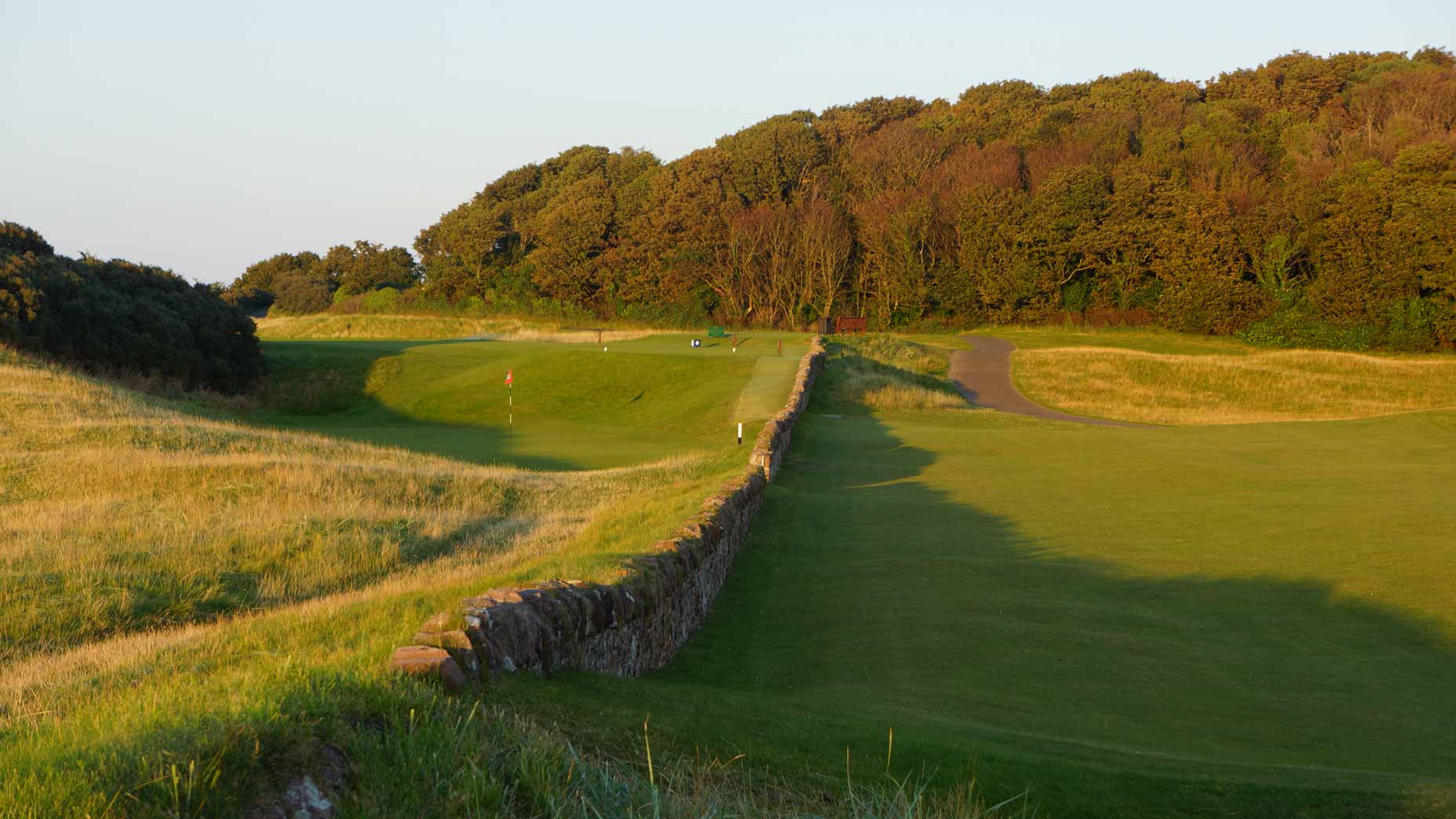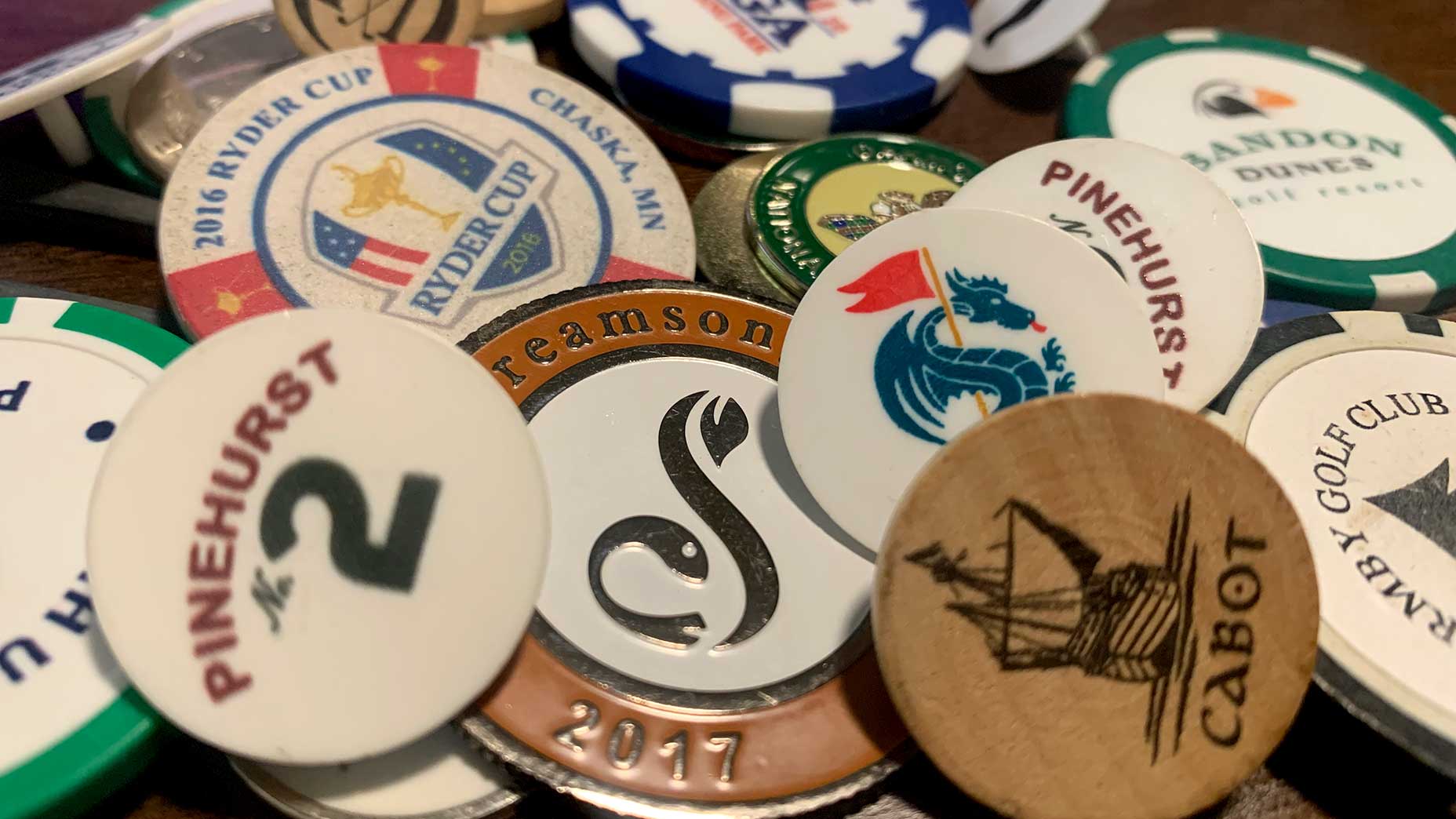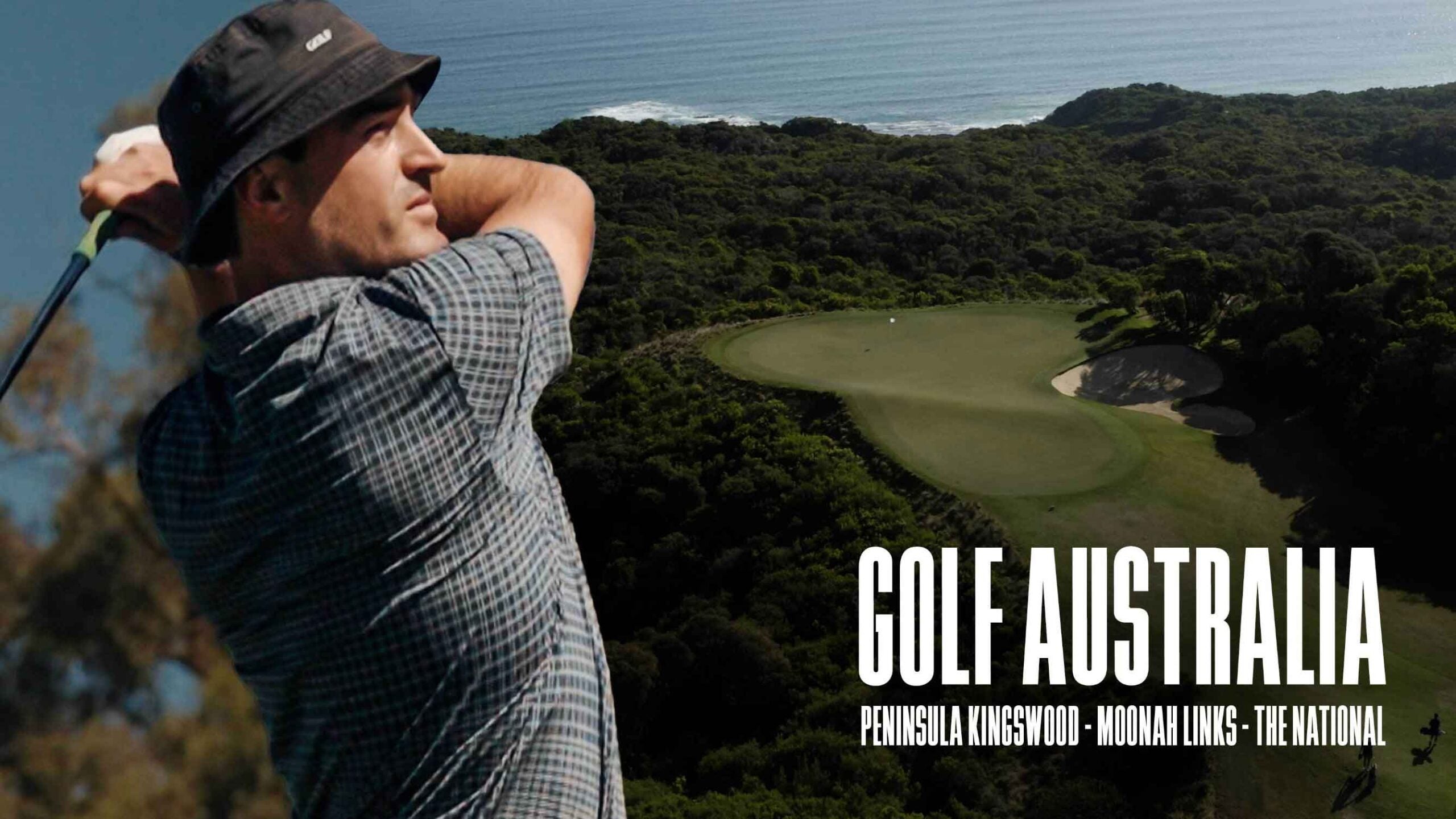 East Lothian, Scotland, golf-trip planning guide: Best places to play, stay, eat
East Lothian, Scotland, golf-trip planning guide: Best places to play, stay, eat
Golf Course Rescue! How Jon Taffer thinks golf can save itself

Long before he became a “hospitality expert” and an iconic television personality, Jon Taffer started his career at Grossinger’s Catskill Resort Hotel. The sprawling campus was an escape from New York City and was home to a convention center, a ski mountain, and, in the summer, golf on three nine-hole courses. “It was the second hospitality job I’d ever had,” Taffer says. “Golf business, group business, selling to golfers, sponsorship programs — I started very much connected to the golf space. So it’s been a big part of my professional expertise over the years.”
Now, some four decades later, the host of “Bar Rescue” still pays plenty attention to the golf space. He sees inefficiency and he sees opportunity. He sees a sport in need of some careful reconsideration. And he sees a lot of people buying seltzer. Jon Taffer spoke with GOLF‘s Dylan Dethier to break down what he sees when he looks at the golf landscape — and what he’d do to “rescue” courses in need of a kickstart.
The interview has been lightly edited for clarity.
In episodes of Bar Rescue, the first thing you do is observe; you take stock of how a business is currently operating. When you look at the game of golf, what’s the first thing you see?
I don’t think golf is different from any other sport. Yeah, we’re seeing what looks like a negative trend: there are fewer golfers than there used to be. But I was looking at numbers, Generation X to Millennials, from the NFL to the NBA to the NHL, and other than the NCAA it’s down across the board. There’s one commonality across it all: time. Younger generations have a greater sensitivity to the waste of time and have an impatience to slow-moving things. Information is zipping by on phones, etc., all the time.
Baseball has a similar issue, football is trying to speed up; every sport is trying to adjust to this generational change. When I look at golf as a sport going forward, we have to do two things as an industry: 1. We have to make the game go faster and 2. Get more people to play — which will also happen as it gets quicker. It’s really a consideration as an industry that needs to be thought about. I heard Greg Norman recently talking about how he’s looking to build 14-hole golf courses to reduce the time of the game. But he’s not really reducing holes — he’s reducing time.
Now let’s talk about golf as a sports experience. A lot of the way people consume sports is as viewers from home. Other sporting events have figured out that to get people there, you have to create a great viewing experience in the arena. We can do that in golf. Clubs need to provide better experiences. There needs to be a faster game, a more energetic game. There needs to be a better 19th hole experience, a better experience at the turn. We have to create a better golf experience. People will come to a better experience.
When you look at the statistics, 44% of golfers play less than 10 times a year and 26% of golfers make up 76% of play. So there’s two things as a golf course that we need to do. We need to get that 44% to play an 11th time. If we do, that’s 10 percent more volume from them, and that’s a big deal. And then, of course, we need to get our 26% to play one more time per year, too. But we need new golfers, and we need frequency. That’s derived experientially.
How do you see golf providing an experience that will keep golfers coming back — and attracting new golfers in the process?
We need creativity. Different kinds of tournaments, different types of contests, different championships, building food festivals around golf outings, building cocktail programs around the game, creating parties at events at the 19th hole.
We need high-quality products, too. The median income of a golfer is $100k, so it’s a pretty sophisticated audience. They’re not going to drink armpit-brand scotch, they want a premium scotch. They want to have a premium experience. They want a great hamburger!
And then we take a look at the fact that 24 million people are playing! That’s still a huge number. Imagine if we could just get another $10 a head off those golfers. Imagine if we could just generate one more drink. One more item of food. Get ‘em to stay one more hour on property to participate in something else when they play golf. Getting them to come beforehand to eat; staying after to eat. We don’t merchandise as well as we could. I think what we need to understand as an industry is that golf is an experience. It’s incredibly social, it’s incredibly beautiful but it takes too damn long for too many people. And I think if we can focus on pace and adding experiences, we could turn those trends around.
Look at TopGolf, who’s taken the game and reinvented it in a different kind of way for a different kind of audience and look at the success they’ve had by energizing golf. You wonder: Why couldn’t clubs do that at certain times? Why couldn’t one day a week be some kind of thematic golf experience that is more energetic or has a food twist to it, or has something going on out on the course that players haven’t seen before.
The median age of a golfer is about 54, if I’m not mistaken. When we take a look at drink trends, we have to understand the demographics of the game. They want premium things. They want things that facilitate importance. Relevancy. That’s why people join country clubs; they want to be relevant and important, somewhere to go where they’re a member and belong. They have status there.
I read that average membership dues are about $2800 per year. So you spend money on the game and the experience; you buy a beautiful bag, beautiful clubs, play a beautiful course looking for this elevated experience and then eat some s—-y frozen hamburger in the clubhouse. It’s a complete disconnection!
Tell me about drink trends in the industry. What direction should golf courses be looking when it comes to stocking up the bar?
Seltzer is massive, and I do want to say that I’m prejudiced; I have Taffer’s Seltzer. Seltzer’s growth this year is 198%; a lot of players are getting into it. What’s great about seltzer is that it’s lighter than a beer, it’s the same alcoholic content as a beer and it fits in a cooler on a golf cart really well [laughs]. It’s a nice canned product! Now, if I’m going to get six dollars for a beer I can get eight dollars for a premium seltzer. Seltzer is an opportunity for golf to up-sell and to provide different flavors; for example Taffer’s Seltzer — and I just happen to know mine, so forgive me — we have Strawberry Basil, which targets a different audience than you might with just a beer. Seltzer is a targeting opportunity.
But it’s not just what you’re selling; it’s how you’re selling it. When I was in the golf industry I was really big on creating food and beverage packages that went out with the carts. I would do things like, when you ordered the cart you could order a six-pack of beer with it, right from the barn. So when you ordered your cart they’d actually say, “Yes, and what type of beer with that? Great.” And we’d put a little cooler of beer on the back with a six-pack. We actually sold the beverages when they sold the cart. That’s a Taffer original. We found that about 30 percent of golfers found that as a great convenience. See what the golfers want! We’ll put a thermos of damn coffee on the golf cart if that’s what they want early in the morning. Our job is to sell to them. Golf courses should focus very hard on their points of contact.
It’s amazing to me that I have that idea and I’ve never seen another golf course do that. If I could challenge the industry for a moment, think of the thousands of people who run golf courses and not one of them ever thought of that. That’s the problem with golf. We wake up every day and we bank on tradition. We need to bank on a future, we need to sell more, we need to merchandise more. We know how to sell a polo shirt in a clubhouse — sometimes. Why don’t we know how to sell food and beverage? I made a lot of money doing things like that.
ADVERTISEMENT
Take me inside the clubhouse after a round of golf. How should the golf business think about creating a positive post-round experience?
We need to understand that when people drink they don’t necessarily eat, but when they eat they drink — every time. So golf courses make a huge mistake by trying to sell the drink first. What I would do at a club is have a buffet set up, $5 a head, you can sell some wings, some meatballs, whatever during prime hours.
When people eat in a bar they stay about 52 minutes longer. The average person consumes two drinks their first hour and one-and-a-half drinks each hour after that. So if I can get you to stay 52 minutes longer, statistically I’ve sold you another drink-and-a-half. Length of stay equals cocktails, particularly in a club environment. Why do we let people walk in, hand ‘em a beer and let them go in 10 minutes? What the hell’s the matter with us?
Instead, why wouldn’t we have them walk in with a food item available, give it to them for Christ’s sake, give ‘em some chips, give ‘em some dry snacks, give ‘em some pretzels, give ‘em some cheese dip for those pretzels. It doesn’t have to be expensive. But the minute you and I sit down with pretzels or chips or a burger or some nachos, you and I are now gonna have two or three drinks. We’re going to sit there for a while. It’s a shame that most golf club operators don’t think that way.
Here’s the summation of it: I attribute membership managers as lazy. Members arrive on their own. If I was a freestanding business, I have to make those people show up. Golf club managers don’t have to make them come; you sign up your members and then the members just happen to come.
Some stuff will happen on its own, but as a business manager I suggest you run your club like a business. At my businesses I’m tracking spend per visit every single time. I’m trying to get another quarter, another 50 cents out of them. I’m trying to get ‘em to stay longer. I have to work the revenues of that visit. Club management doesn’t look at it that way; they serve but they don’t sell.
So is that somewhere the public golf course might differ from the country club? At a public course, you obviously have to convince people to come spend their time and money there.
It’s a different model, you bet. I have to fill that course just to begin with. As an operations manager at a country club you’re not responsible for how often they come — but you should be. I would be tracking member frequency of visit, length of stay of visit, revenue per visit. I’d beat the hell out of my manager on all those things. The financial pressures don’t land on club management the same way as generic business management. That’s my point. And it’s a valid one.
As an industry expert, what’re people drinking when they get to the course on a weekend? How are those patterns changing?
Well, beer is way down. Other than two Mexican brands, there was not one beer in America that was projecting an increase in sales in 2019. There are some small craft breweries in different cities that are doing well locally, but generally speaking the beer sector is in big trouble. Seltzers are very hot, particular with women and couples. Whiskey is on fire.
Whiskey is still the hottest growth product in America. Take a look at the regions in which people play golf. When you look at a region like Florida, you can sell a lot more rum cocktails and tropical things that tie into the palm trees on the golf course. When you’re in the Midwest you’re selling whiskey drinks, vodka drinks, things that tie into an oak tree on a golf course, if that’s not a silly analogy. When you’re at a golf course that’s coastal, play into that coastal piece of it.
There are so many things we can market to. Whiskey is hot right now. Tequila is starting to get very hot right now. And seltzer.
Okay, give me three indispensable cocktails that every golf course needs to have at the ready.
First, a very special old fashioned. I would use things like orange bitters, maybe some flavored bitters; some old fashioneds use some cherry juice, you could play around with that. Pre-Prohibition, old fashioneds had an orange, because the whiskey sucked. Post-Prohibition they didn’t have an orange; you can play around with that. Old fashioneds you can sell for $30 if you do it right.
Next, give me a Bloody Mary. That’s a cocktail that’s extremely hot right now. What’s fun about Bloody Marys is that clubs could easily set up Bloody Mary bars. Something as simple as a little table with some horseradish, some spices on it, some shrimp you can drop on it, some celery in there, all the fixings. If you can make your own Bloody Mary, dress it up yourself, have a little fun, that’s a win to start the day. I’d also be looking at pitchers of Bloody Marys for golf carts to go.
Third, dare I say it, a mimosa, because golf is such a daytime activity. You can play around with the champagne, you can play around with the juices, apricot juices and cherry juices and things like that — it doesn’t just have to be orange juice.
Again, it’s not just the cocktails on the menu, too. It’s how you offer them. You go to Yankee Stadium, they have a plastic mixing cup with a Yankee helmet on top with a cocktail in it. It’s sort of like a cocktail plus a glass. So you get this little glass plastic mixing cup and you get it attached to your glass. Why couldn’t we do the same with a cocktail on a golf cart?
You worked with John Daly and his fiancé on Bar Rescue. What did you take away from your time with them?
We had a lot of fun. The bar was owned by his in-laws, and they were in a jam and he was trying to help his family. I got my first John Daly cocktail, in fact I got an autographed bottle that I keep on my back bar. I always loved that a John Daly is just an Arnold Palmer with vodka. It’s perfect for John, if you think about it.
John just has a magnetic personality. He radiates energy. He was a lot more fun than necessarily I thought he’d be, and a lot more laid back than I thought he would be. He’s a very inquisitive kind of guy, he was very curious about the bar business and how much we should be making in different parts of the business and how we could market more. He’s a good businessman; at the time he was working on a John Daly restaurant. I wonder how that did?
You’ve obviously seen the rise in demand for seltzer; what inspired you to get into that space with your own line? How do you differentiate yourself when so many players are getting into seltzer?
Most seltzers, I don’t want to mention brand names, but they’re malt-based products. In essence, they’re flavored beers. So when you look at most of these seltzer products, as a malt product in can be heavy, it can have a different type of finish, so I wanted to create a seltzer that wasn’t malt-based so I worked for a year on Taffer Seltzer. Our product is orange wine based. Not malt based. It’s still 5% alcohol, just like a beer or like other seltzers would be. Unlike a malt-based product, the finish is much crisper. It’s lighter, it doesn’t have the heaviness of a malt product so it has a very different kind of profile to it. Buzzfeed did a test with 71 different kinds of seltzers and we came in 2nd out of 71. You’ll see what I mean when you try another malt-based product versus the Taffer seltzer; you’ll immediately know the difference.
I wanted to start there, and then my flavors could be stronger because the wine is more of a neutral base. My flavors could be more dynamic because they’re not competing with the malt. You do something like that, you never know because taste is so subjective. It’s almost like a golf course; one guys loves it, the next guy freakin’ hates it. I just hoped people would like it and I’m glad they do.
Give us the final word, big picture, on the importance of hospitality to the world of golf.
I don’t think you can have golf without hospitality; the two are one thing. There is no golf if we don’t work on creating the experience, and that experience doesn’t only happen on the course. We have to take a look at our clubhouses, and at the places we have to work on marketing, on merchandising. The future of golf isn’t just on the greens; it’s in the experience. Ooh, that was pretty good. Let’s leave it at that.
To receive GOLF’s all-new newsletters, subscribe for free here.
ADVERTISEMENT









